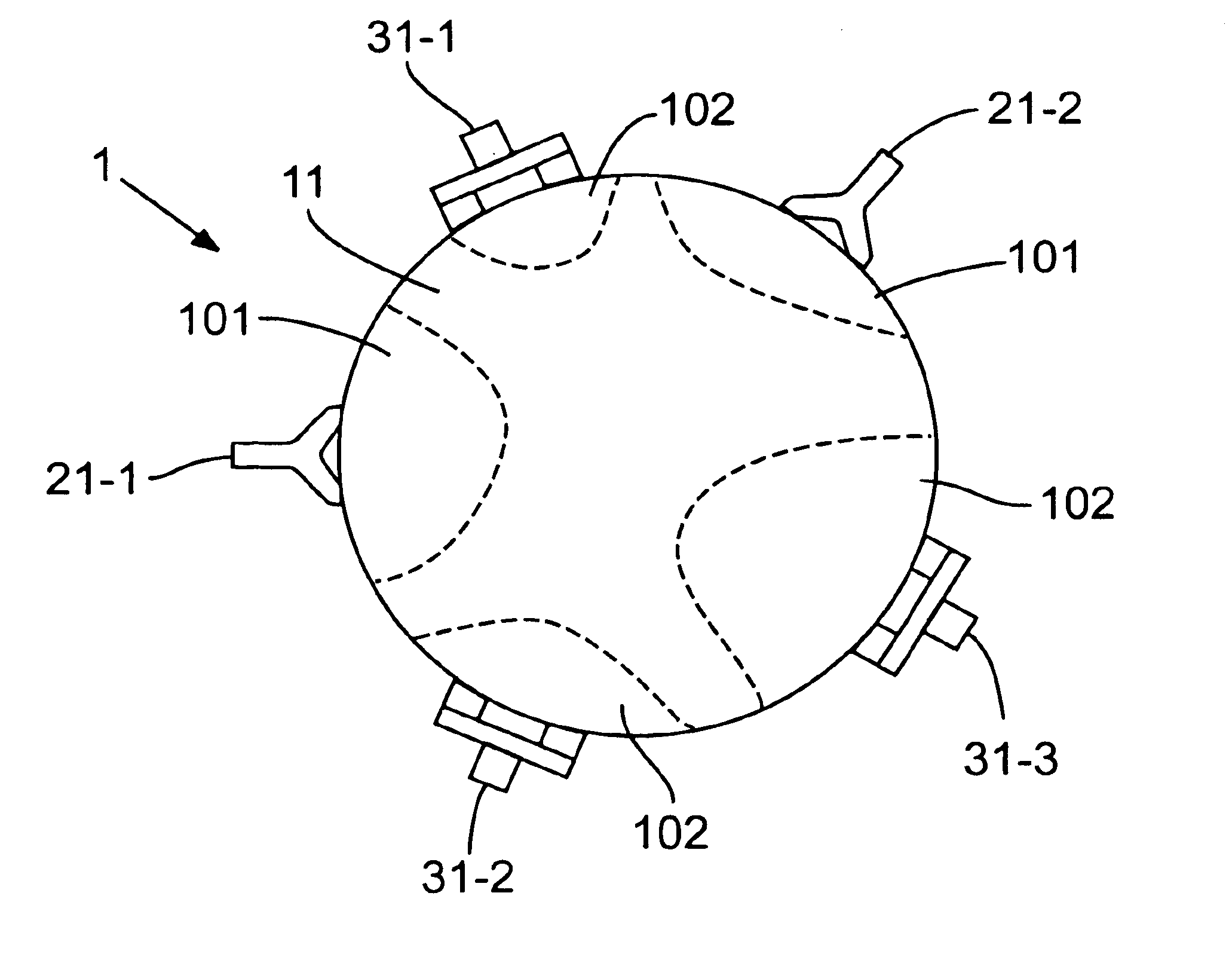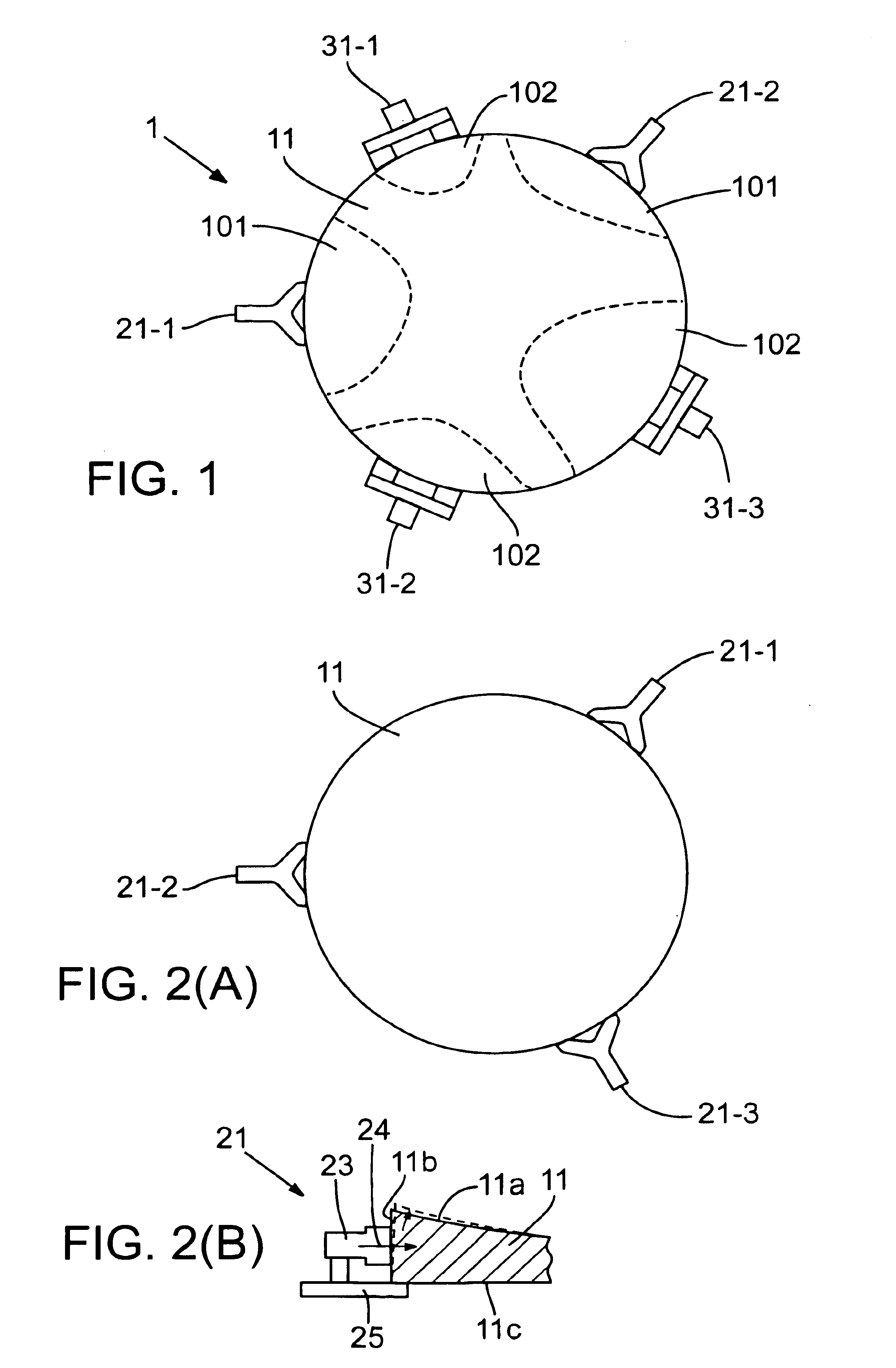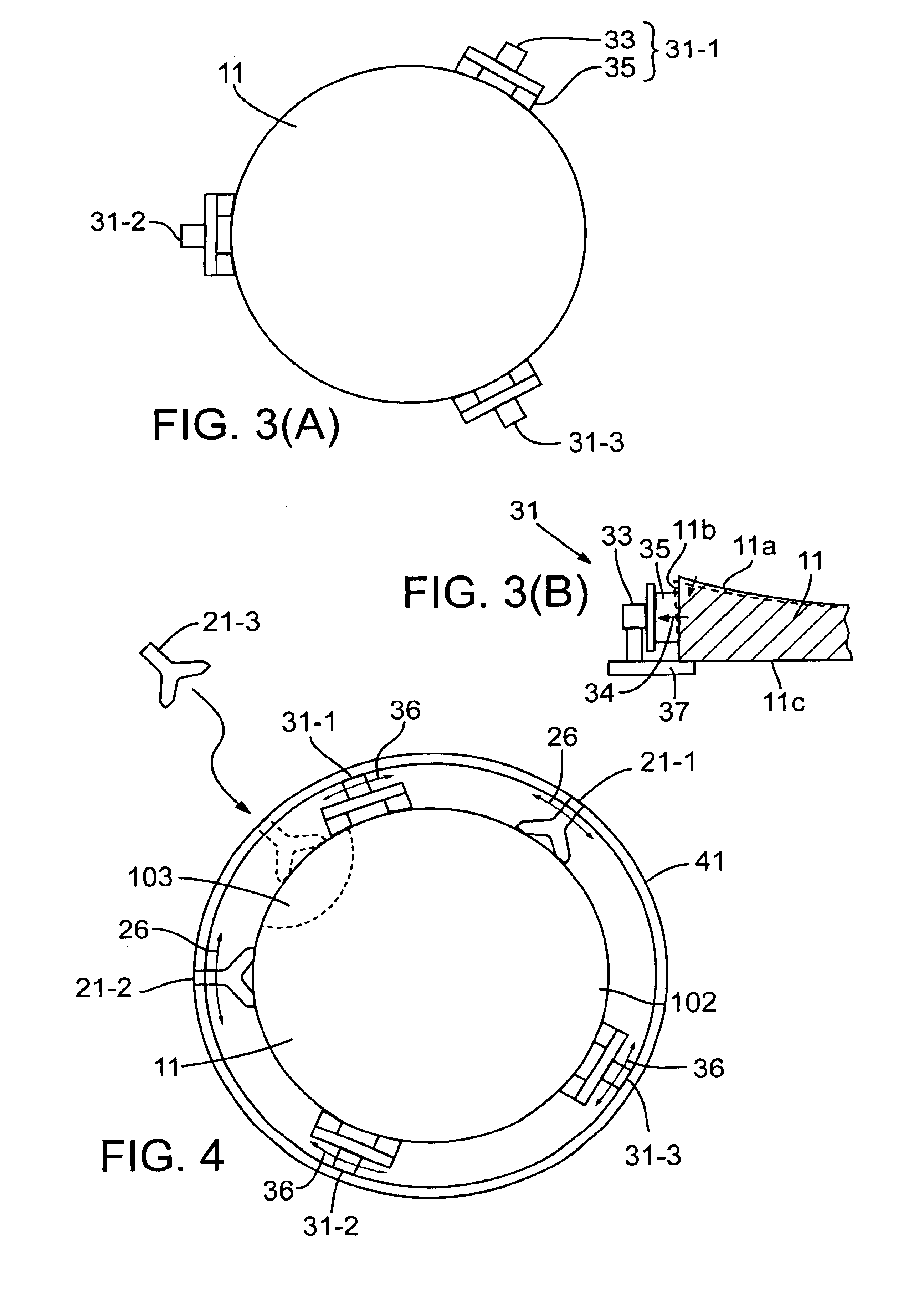Form-error-cancelling mirror-support devices and related methods, and microlithography systems comprising same
- Summary
- Abstract
- Description
- Claims
- Application Information
AI Technical Summary
Benefits of technology
Problems solved by technology
Method used
Image
Examples
Embodiment Construction
Various aspects of the invention are discussed below in the context of representative embodiments that are not intended to be limiting in any way.
First reference is made to FIG. 5, which depicts a SXR (EUV) projection-microlithography system 201 including one or more reflective optical components mounted as described later below. The system 201 of FIG. 5 employs, as a lithographic energy beam, a beam of EUV light of λ=13 nm. The depicted system 201 is configured to perform microlithographic exposures in a step-and-scan manner.
The EUV beam is produced by a laser-plasma source 207 excited by a laser 203 situated at the most upstream end of the depicted system 201. The laser 203 generates laser light at a wavelength within the range of near-infrared to visible. For example, the laser 203 can be a YAG laser or an excimer laser. Laser light emitted from the laser 203 is condensed by a condensing optical system 205 and directed to the downstream laser-plasma source 207. Upon receiving the...
PUM
 Login to View More
Login to View More Abstract
Description
Claims
Application Information
 Login to View More
Login to View More - R&D
- Intellectual Property
- Life Sciences
- Materials
- Tech Scout
- Unparalleled Data Quality
- Higher Quality Content
- 60% Fewer Hallucinations
Browse by: Latest US Patents, China's latest patents, Technical Efficacy Thesaurus, Application Domain, Technology Topic, Popular Technical Reports.
© 2025 PatSnap. All rights reserved.Legal|Privacy policy|Modern Slavery Act Transparency Statement|Sitemap|About US| Contact US: help@patsnap.com



